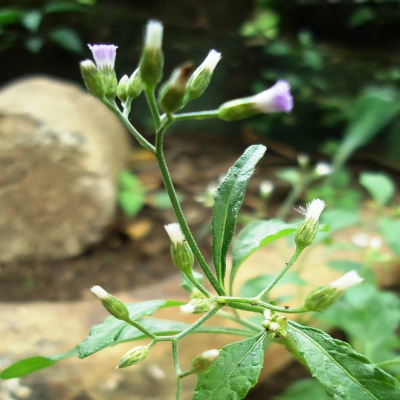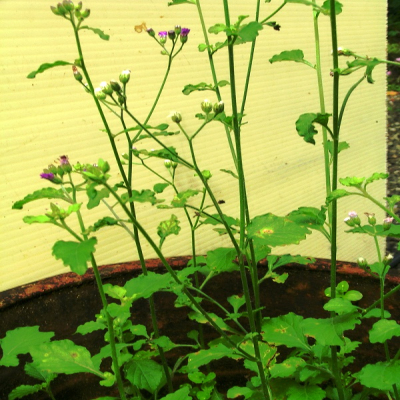Cyanthillium cinereum (L.) H.Rob.
Synonyms : Vernonia cinerea (Linn.) Less.
Family : Asteraceae
Group : 2. Dasapushpam, Eye diseases
Parts Used : Root , Leaf , Seed , Flower
Vernacular Names :-
| English | : | Ash coloured fleabane |
| Malayalam | : | Puvamkurunnal |
| Hindi | : | Sahadeyi |
| Sanskrit | : | Sahadevi |
| Bengali | : | Kuksim |
| Gujarathi | : | Sadodi |
| Kannada | : | Sahadevi |
| Tamil | : | Puvamkuruntal |
| Telungu | : | Gharitikamani |
Distribution and habitat: Throughout India, as a weed on road sides and open places.
Botany: An erect or some what decumbent annual herb, 12 - 75 cm in height with cylindric, striate, more or less pubescent branched stem.
- Leaves : Simple, alternate, variable in shape, ovate or lanceolate, shortly mucronate, irregularly toothed or shallowly crenate-serrate. Petioles variable, 6-13 mm long.
- Fruits : Oblong achenes, 12.5 mm long, slightly narrowed at the base, clothed with appressed white hairs.
- Flowers : Many ,pinkish-violet , in small heads , involucral bracts oblong , lanceolate ,acuminate ,awned ,silky on the back.
Properties: Astringent, diaphoretic, antirheumatic
Uses: Used against diarrhoea, stomachalgia, cough, chronic intermittent fevers, inflammation, conjunctivitis, humid herps, eczema, elephantiasis, ringworm, roundworms, threadworms, flatulence, psoriasis, chronic skin diseases, dysuria, good for cancerous malformations. It is a blood purifier and good for treating headache and eye diseases.
Propagation: Seeds


